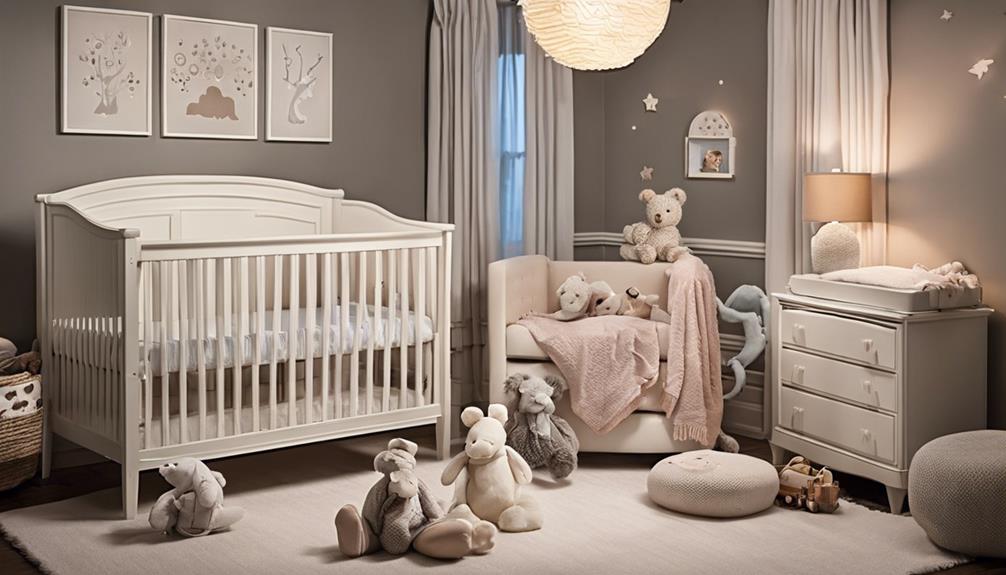As we navigate the delicate balance of newborn care, we often find ourselves tiptoeing around safety concerns. But what happens when our little one insists on snuggling up on their side for a cozy nap? Is it safe?
Let's explore the intricate dance between a newborn's preference for side sleeping and the guidelines for safe sleep practices. Join us as we unravel the complexities of this sleeping dilemma and uncover the best path forward for our precious bundles of joy.
Key Takeaways
- Side sleeping increases SIDS risk and suffocation dangers.
- Back sleeping is recommended to prevent SIDS and ensure safety.
- Safe sleep practices emphasize back sleeping for newborns.
- Prioritize back sleeping over side sleeping for newborn safety.
Risks of Newborn Side Sleeping
When we place newborns on their side to sleep, we unknowingly expose them to an elevated risk of suffocation and other serious dangers. Side sleeping in newborns can lead to a decrease in oxygen levels and an increase in carbon dioxide intake, as they may inadvertently rebreathe the air around them. This poses a significant risk, especially considering that infants lack the ability to roll back over if they find themselves face down.
Furthermore, the risk of sudden infant death syndrome (SIDS) is heightened when newborns sleep on their side, making it a concerning factor in infant safety. Additionally, side sleeping can contribute to the development of torticollis, a condition characterized by neck muscle tightness, and harlequin color change, a temporary color asymmetry in a baby's body due to uneven blood flow.
Understanding these risks associated with side sleeping is important in ensuring the safety and well-being of newborns during their sleep. Prioritizing safe sleep practices can help mitigate these dangers and promote a secure sleeping environment for infants.
Benefits of Sleeping on Side
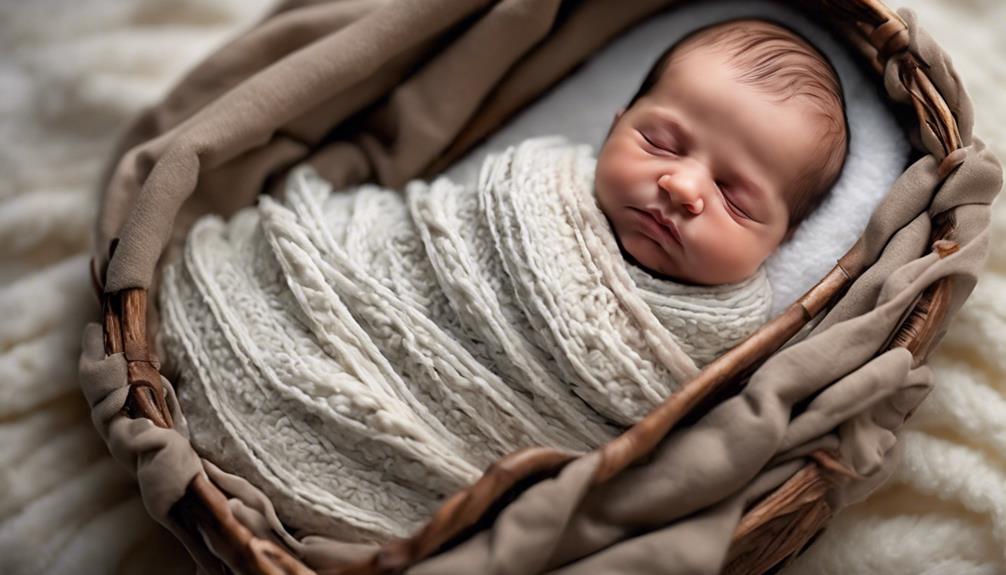
Sleeping on the side offers several potential benefits for newborns that can positively impact their well-being. This position may reduce the risk of choking and vomiting milk in infants, as it helps keep the airways clear. Additionally, side sleeping can improve breathing patterns, potentially reducing snoring and enhancing oxygen flow during sleep. Some babies experience less pressure on their heart when sleeping on their side, which can be beneficial for their overall health. Moreover, this position has been linked to better digestive system function in newborns. To help you visualize these advantages, here is a table summarizing the benefits of side sleeping for infants:
| Benefits | Description |
|---|---|
| Reduced Choking | Decreases the likelihood of choking on milk or saliva while sleeping. |
| Improved Breathing | Enhances breathing patterns, potentially reducing snoring and ensuring better oxygen flow. |
| Enhanced Digestion | Linked to improved digestive system function in newborns. |
Safe Sleep Practices for Newborns
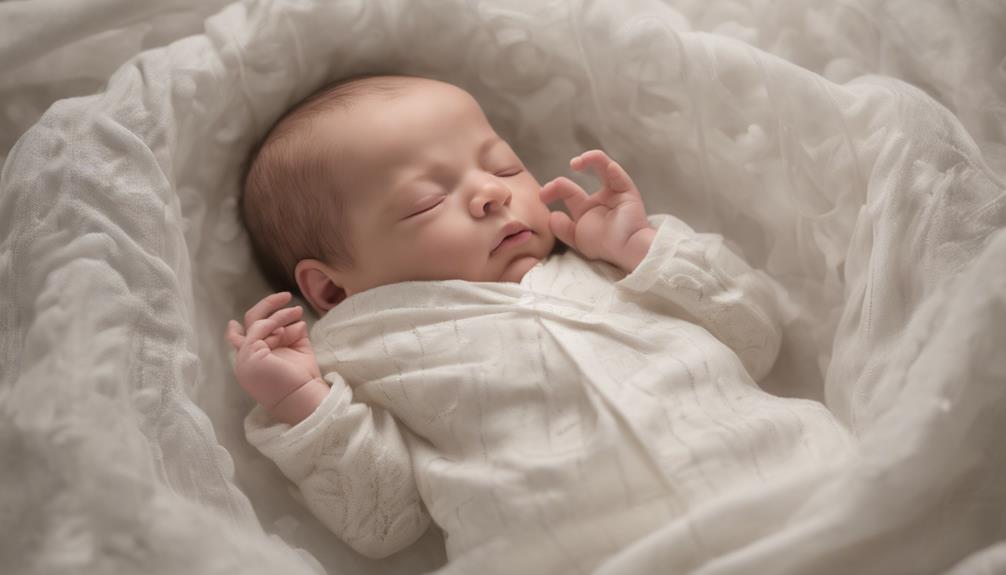
To guarantee the safety and well-being of newborns, it's important to prioritize proper sleep practices, particularly emphasizing the importance of placing infants on their back. When it comes to safe sleep practices for newborns, here are some essential guidelines to follow:
- Back to Sleep: Always position your baby on their back to sleep, as this is the safest sleep position recommended by medical experts to reduce the risk of Sudden Infant Death Syndrome (SIDS).
- Avoid Side Sleeping: Side sleeping isn't safe for newborns, as it can increase the risk of suffocation, rebreathing of air, and accidental rolling onto the stomach during sleep.
- Prevent Side-Sleeping: Ensure your baby's sleep environment is free from hazards that could lead to side-sleeping, such as loose bedding or stuffed animals.
- Seek Medical Advice: If you have concerns or questions about safe sleep practices for your newborn, don't hesitate to consult with your pediatrician or healthcare provider for personalized guidance.
Following these safe sleep practices can help create a secure and healthy sleep environment for your precious infant.
Addressing SIDS Concerns
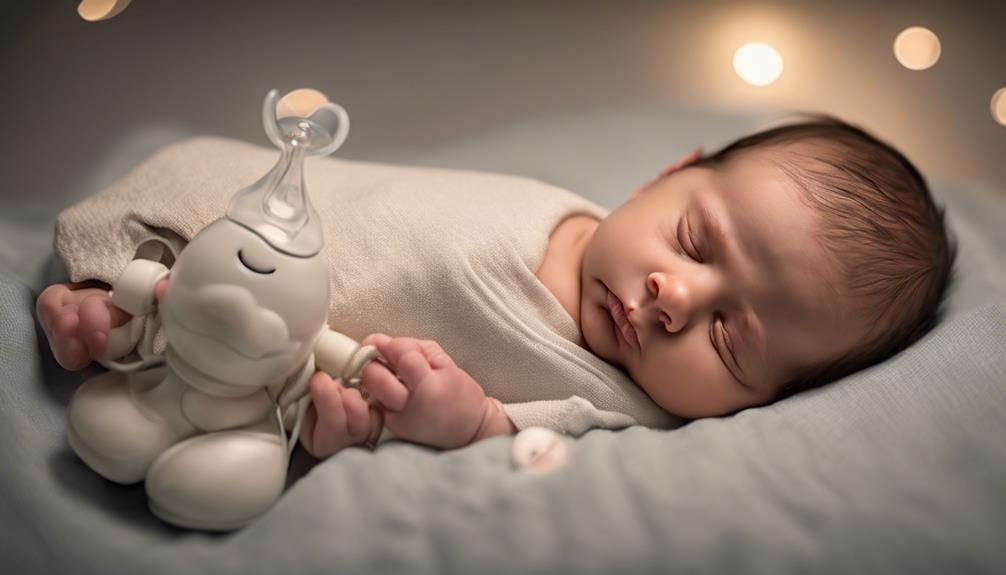
Placing newborns on their side for sleep greatly increases the risk of SIDS, a leading cause of infant mortality. Side sleeping can compromise a baby's safety by potentially reducing oxygen levels and creating airway obstructions, increasing the likelihood of SIDS.
It's important to understand that risk factors for SIDS, such as stomach sleeping, can inadvertently occur when placing infants on their side. To prioritize infant safety and prevent SIDS, experts recommend back sleeping as the safest sleep position for newborns.
By consistently practicing back sleeping, parents can greatly reduce the risks associated with SIDS during sleep. Ensuring a baby sleeps on their back not only promotes better oxygen flow but also minimizes the chances of airway blockages and potential dangers.
Tips for Side Sleeping Safety
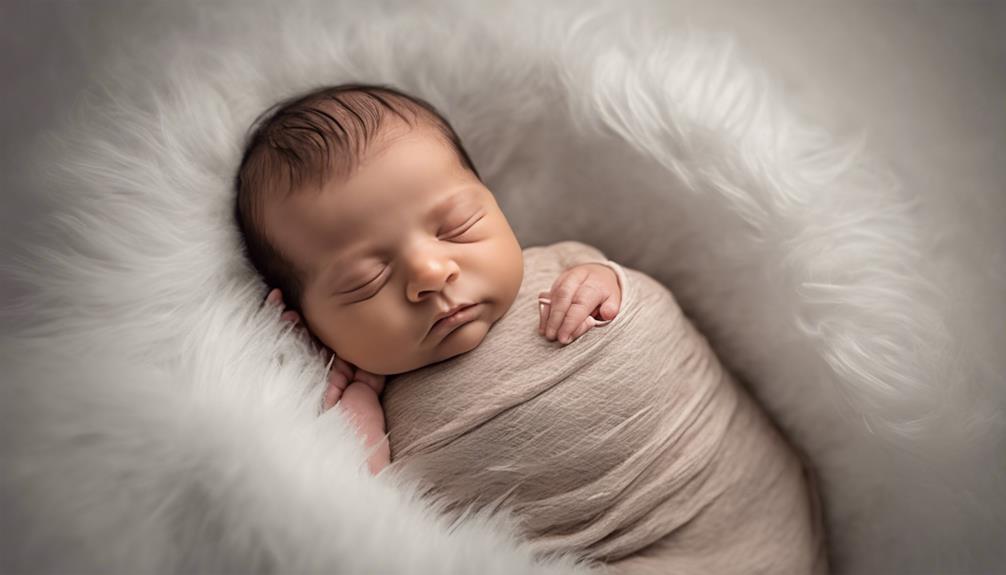
In ensuring the safety of newborns during sleep, it's important to understand the risks associated with side sleeping. Here are some tips to guarantee side sleeping safety for your little one:
- Opt for Back Sleeping: Placing your newborn on their back is the safest sleeping position and reduces the risk of SIDS greatly.
- Avoid Side Sleeping: While your newborn may prefer side sleeping, it's critical to gently guide them back to their back position for their safety.
- Create a Safe Sleep Environment: Use a firm mattress, remove any loose bedding or toys, and make sure the room is at a comfortable temperature to promote safe sleep.
- Don't Let Them Sleep on Their Side: While it may seem harmless, it's safest to avoid letting your newborn sleep on their side due to the increased risk of SIDS associated with this position.
Conclusion
To sum up, it's important to prioritize safe sleep practices for newborns, including always placing them on their back to sleep. While it may be tempting to let them sleep on their side, the risks of SIDS are too great to ignore. Remember, their safety is paramount.
So, ask yourself: is it worth the risk? Stick to safe sleep guidelines for a peaceful night's rest for both you and your little one.




